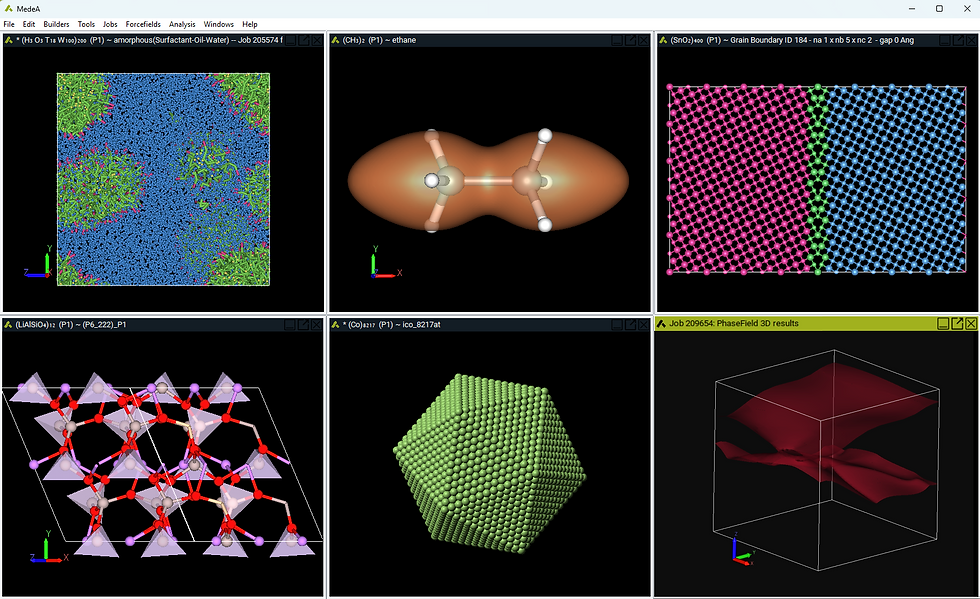MedeA 2.13 Released
- Katherine Hollingsworth
- Feb 6, 2013
- 2 min read
What’s New in MedeA version 2.13?
MedeA 2.13 is of particular value if you are working with thermoset polymers, electron transport, or the latest features of VASP. This new version of MedeA provides an efficient thermoset PolymerBuilder, new capabilities for the simulation of thermoelectric and electron transport properties, and VASP 5.3.3, which has significant extensions, underlining VASP's position as the world leading first-principles solid-state simulation code. In addition to these major enhancements, we have made broad updates to the MedeA architecture providing a wide range of improvements to overall functionality, including extensions to docking, and metal simulation using Embedded Atom Methods (EAMs).
MedeA 2.13 new features
MedeA Amorphous Materials Builder:
Cross-linked model creation stage based on defined reactive groups for the construction of thermoset polymer models.
User defined, arbitrary reactive sites, to construct any desired network model
Efficient simulated annealing via molecular dynamics and energy minimization construction
Key model characteristic reporting during construction
Full MedeA Flowchart integration, enabling creation of simulation protocols for model building automation, simulation, and property prediction for batches of thermosets
MedeA-Electronics:
Electron transport properties: Seebeck coefficient, Hall tensor, electronic specific heat, and electronic and thermal conductivity given defined relaxation times
Full integration with VASP
Customized analysis tools for electron transport properties as a function of temperature and doping
Doping effects and band gap corrections within a rigid band scheme
MedeA-VASP:
Forcefield based description of Van der Waals interactions by the Tkatchenko-Scheffler approach making use of the ab-initio charge density (an alternative to the DFT-D2 approach of S. Grimme)
Van der Waals density functionals (vdW-DF, vdW-DF2 and optimizations thereof) for the approximate inclusion of dispersive interactions from first principles without empirical parameters
Support for MetaGGA (revTPSS, TPSS, M06-L) additionally making use of the kinetic energy density for more accurate energies and structures
Modified Becke-Johnson metaGGA for electronic properties and band gaps with accuracies comparable to hybrid functionals and GW with reduced computational effort
Electric field gradients at nuclei positions
Hyperfine parameters describing the interaction of nuclear spins with electronic spin densities
VASP 5.3.3 serial and parallel executables based on the latest release from the Kresse group in Vienna
MedeA-LAMMPS Embedded Atom Method (EAM)
EAM forcefield based on the work of Francis et al., 2008 for the description of alloy energetics
Additional Enhancements:
Enhancements for combining multiple guest molecules with host systems in flowchart-based simulations
Usability enhancements for flowchart construction and editing
Seamless import of .car/.mdf file pairs from legacy sources
Streamlined support for multicore Windows architectures



Comments